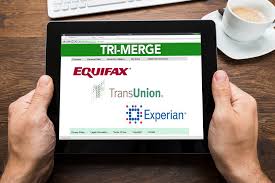Abatement: A formal reduction or elimination of an assessed property valuation after the initial assessment for ad valorem taxation; the termination of a nuisance; or a reduction in rent levels, sometimes due to rent control measures.
Absorption Rate: The rate at which properties are successfully sold or leased in a given area over a specified period. It indicates market demand and is closely related to the capture rate.
Access Rights: The legal right of property owners to enter and exit their property via an adjoining street or highway. It also includes the right of a riparian owner to access bordering waters.
Administrator: A person appointed by a court to manage and settle the estate of a deceased person who left no will. An administrator handles the estate’s assets, pays its debts, and distributes the remaining property as per legal requirements.
Adverse Possession: A method of acquiring legal ownership of property through continuous, exclusive, open, and notorious possession, under a claim of right, for a statutory period, which varies by state.
Allocation: A method used to estimate land value by analyzing sales of improved properties to establish the typical ratio of land value to total property value.
Amortization: The systematic repayment of a debt or capital investment, typically involving scheduled payments of principal over time.
Anticipation: The principle that property value is driven by the expectation of future benefits.
Appraisal: The process of developing an opinion of value for real property.
Appraisal Consulting: Providing analysis, recommendations, or opinions to solve problems where value is a key consideration, but not necessarily the primary focus.
Appraisal Management Company (AMC): A firm that acts as a liaison between lenders and appraisers, managing appraisal orders and providing valuation services.
Appraisal Practice: The provision of valuation services performed by an appraiser, including appraisals, reviews, and consulting.
Appraiser: A professional tasked with providing independent, impartial, and objective valuations of real property.
Appraisal Report: The written or oral communication that presents the appraiser’s findings and value opinion.
Assemblage: The process of combining two or more parcels under one ownership, which may result in plottage, an increase in property value due to unified ownership.
Assignment: The transfer of rights, such as property use or occupancy, from one party to another, including the assignment of mortgages, leases, or sales contracts.
Capital Recapture: The recovery of the original investment amount, distinguished from the return on investment, often through the property’s liquidation at the end of the investment period.
Capital Recovery: The return of an investor’s original capital investment, reflecting either physical depreciation or financial mechanisms like mortgage-equity analysis.
Capture Rate: The estimated percentage of a potential market that a specific property or development is expected to capture. Short-term capture rates are measured by absorption, while long-term capture rates assess market share.
Caveat Emptor: A legal principle meaning “let the buyer beware,” emphasizing that buyers assume risk when purchasing property.
Comparables (Comps): Recently sold or listed properties similar in characteristics to the subject property, used as benchmarks in the valuation process.
Compulsory Acquisition/Purchase: The government’s legal authority to acquire private property for public use, also known as eminent domain in North America.
Condemnation: The legal process of taking private property for public use through eminent domain.
Condominium: A form of property ownership where individual units are owned privately while common areas are jointly owned.
Contributory Value: The value added or subtracted by a property component, influencing the overall value of the property.
Cost Approach: A valuation method where the appraiser estimates the cost to replace or reproduce a structure, deducts depreciation, and adds land value to determine the property’s value.
Cost to Cure: The cost required to restore a component of a property to its original or near-original condition.
Cul-de-Sac: A street with one open end and a rounded closed end for turnaround, common in residential neighborhoods.
Curable Functional Obsolescence: A type of depreciation where defects in a property can be economically corrected to improve functionality.
Depreciation: The loss of property value over time due to factors such as age, wear and tear, or obsolescence.
Deed in Lieu: A deed given to a lender by a borrower as an alternative to foreclosure.
Discount Rate: A rate used to convert future income or payments into present value, often synonymous with yield rate.
Easement: The right to use another person’s land for a specified purpose, such as access or utilities.
Economic Age-Life Method: A method of estimating depreciation by applying the ratio of effective age to economic life against the property’s improvement cost.
Effective Age: The apparent age of a property based on its condition and maintenance, which may differ from its actual chronological age.
Effective Date: The date on which the appraiser’s value opinion applies, significant in setting valuation benchmarks.
Effective Gross Income (EGI): The anticipated income from real property operations after vacancy and collection losses are deducted.
Eminent Domain: The government’s right to acquire private property for public use upon payment of just compensation.
Encroachment: The unauthorized intrusion of a structure or feature onto another’s property, often leading to disputes or legal claims.
Encumbrance: A claim or liability that affects the title or condition of a property, such as a mortgage, lien, or easement.
Entrepreneurial Profit: The profit an entrepreneur earns from a development project after accounting for risks, costs, and market value.
Escheat: The transfer of property ownership to the state when a person dies without a will and has no heirs.
Escrow: A financial arrangement where property or funds are held by a third party until conditions are met.
Estate: A legal interest in property, which defines the ownership rights, such as fee simple, life estate, or leasehold interest.
Excess Land: Land that exceeds what is required to support the existing improvements and can be sold separately.
Executor: A person designated in a will to administer the deceased’s estate.
Exposure Time: The estimated time a property would remain on the market before selling at its market value.
External Obsolescence: A type of depreciation caused by external factors beyond the property owner’s control, usually incurable.
Extraction: A method of estimating land value by subtracting the depreciated cost of improvements from the total sale price.
Fair Market Value: The most probable price a property should bring in a competitive market under fair conditions, widely used in litigation, taxation, and condemnation.
Fannie Mae: A government-sponsored enterprise (GSE) that purchases mortgages to ensure liquidity in the housing market.
Federal Housing Administration (FHA) Mortgage: A government-insured mortgage under the National Housing Act, providing support to homebuyers.
Fee Simple Estate: The most comprehensive form of property ownership, subject only to government rights like taxation and eminent domain.
FEMA Map: A map created by the Federal Emergency Management Agency indicating flood zones, also known as a Flood Insurance Rate Map (FIRM).
Field Review: An appraisal review that includes inspecting the subject property and possibly the comparables, often with a customized checklist.
Final Reconciliation: The process of resolving multiple value indicators into a single value estimate or range during the appraisal.
Forecasting: Estimating future trends based on past data and market analysis.
Foreclosure: The legal process by which a lender takes control of a property due to the borrower’s default.
Freddie Mac: A government-sponsored enterprise (GSE) that buys residential mortgages, enhancing liquidity in the housing market.
Functional Obsolescence: The decline in a property’s usefulness due to outdated features or poor design.
Functional Utility: The efficiency and effectiveness of a property’s design in meeting current market needs.
Grantee: The party receiving property rights through a deed.
Grantor: The party transferring property rights through a deed.
Gross Rent Multiplier: A metric that relates a property’s sale price to its rental income, often used in income property valuation.
Highest and Best Use: The most profitable legal use of a property, meeting the criteria of legal permissibility, physical possibility, financial feasibility, and maximum productivity.
Hypothetical Condition: A condition that is contrary to fact but is assumed for analysis purposes.
Income Capitalization Approach: A valuation method that converts anticipated income into property value, typically used for income-producing properties.
Ingress: The right or ability to enter a property.
Interim Use: The temporary use of a property until it reaches its highest and best use.
Joint Tenancy: A form of property ownership with equal shares and the right of survivorship.
Leased Fee Interest: The ownership interest in a property subject to a lease, where the landlord retains ownership while the tenant has occupancy rights.
Leasehold Interest: The tenant’s right to occupy and use a property under the terms of a lease.
Legally Nonconforming Use: A use that was legally established but no longer conforms to current zoning regulations, often referred to as “grandfathered.”
Lessee: The tenant in a lease agreement.
Lessor: The landlord in a lease agreement.
Marketing Time: The estimated time it would take to sell a property at its market value immediately after the appraisal’s effective date.
Market Value: The most probable price a property would sell for under fair market conditions, accounting for buyer and seller motivations.
Mass Appraisal: The valuation of multiple properties at once using standardized methods, often for tax assessment purposes.
Modified Economic Age-Life Method: A depreciation method that adjusts the ratio of effective age to economic life based on curable items.
Neighborhood: A defined area with a grouping of complementary land uses or inhabitants, often within a master-planned community.
Obsolescence: The loss of desirability and value due to factors like outdated design, external influences, or newer alternatives.
Overimprovement: An improvement that exceeds the optimal size or quality for its location, potentially leading to value loss.
Oversupply: A market condition where supply exceeds demand, resulting in high vacancy rates and declining rents.
Paired Data Analysis: A technique used to identify and measure adjustments by comparing nearly identical properties and isolating specific characteristics’ effects on value.
Physical Life: The total lifespan a building is expected to have, distinct from its economic life.
Potential Gross Income (PGI): The total income a property would generate at full occupancy, before accounting for expenses.
Professional Property Valuer: A qualified individual with the expertise to estimate property values for a range of purposes, including transactions, financing, and litigation.
Riparian Rights: The rights of landowners whose property abuts a body of water, allowing for reasonable use of the water.
Sales Comparison Approach: A valuation method that compares similar properties, adjusting for differences to arrive at the subject property’s value.
Short Sale: A property sale where the proceeds fall short of the outstanding loan balance, often accepted by lenders to avoid foreclosure.
Special Use Permit: A permit allowing a property use that deviates from zoning regulations, often granted for conditional uses like churches or hospitals.
Surplus Land: Land that exceeds what is necessary for the current improvement and may have limited or no independent value.
Swale: A shallow depression in the landscape, often used for stormwater management.
Tenancy by the Entirety: A type of joint property ownership between spouses, with rights of survivorship and protection from individual creditors.
Underimprovement: An improvement that is insufficient for maximizing the site’s potential, often due to lower quality or smaller size than neighboring properties.
Valuation Process: The systematic procedure followed in appraising real property.
Value in Use: The value of a property for a specific use, which may differ from its highest and best use or market value.
Zoning: The regulation of land use through local ordinances, establishing guidelines for building size, lot coverage, and permitted activities.
Zoning Variance: A legally authorized deviation from zoning regulations for a specific property, granted when strict enforcement would cause undue hardship.









